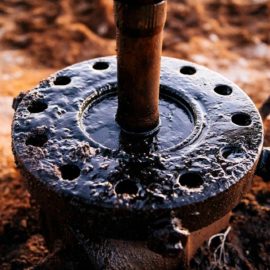
Louisiana’s marshes are masters at capturing carbon from the air, locking it in the soil beneath the water’s surface where it won’t disturb the atmosphere or the climate. They act as a huge carbon sink along the coast of the Gulf of Mexico, steadily accumulating more gas than they emit. That ability will become increasingly valuable as the state moves toward the carbon neutrality goals set last year by Gov. John Bel Edwards. He has his eyes set on zero net emissions by 2050.
nola.com
What is not known is how much carbon is in the marches now. The study will try to find out and also develop a methodology for using it in coastal restoration.
“There are several efforts nationally that are in a similar tent … but I do think this is a place where we can say we are the forefront of some of these attempts to try to provide these estimates,” said Jim Pahl, a senior coastal resources scientist with the Louisiana Coastal Protection and Restoration Authority. The coastal authority and the Governor’s Office of Coastal Activities have tapped scientists led by Melissa Baustian, coastal ecologist at The Water Institute of the Gulf, for the 10-month study. The group will pore over previous research on the carbon capture capability of Louisiana’s marsh, including both its soil and its vegetation.
The marches of all five Gulf states hold carbon but two-thirds is held by Louisiana as we both have more marshes and our soil holds accumulates carbon at a faster rate.
Researchers from across the Gulf will have the chance to advise the Louisiana study’s scientists on how past data should be interpreted. Funded by $300,000 from the Gulf Coast Ecosystem Restoration Council, the study’s report will be shared across the other Gulf states to use in their own carbon analyses of coastal projects. It will include projections of how the coast’s carbon sink capacity will change in 2025, 2030 and 2050 and show different scenarios based on whether restoration projects proposed in Louisiana’s $50 billion, 50-year master plan are realized. Given Louisiana’s land loss crisis, the sink estimates will likely shrink alongside the state’s footprint.
It is hoped that the findings of the study will reflect a positive slant to both water quality and serving as a storm buffer. This is countered by our loss of wetlands.
“We know that simply our area of wetlands is declining,” she said. “With the decline of those wetlands, … we just simply don’t have the plants and soil there any more, and open water doesn’t grab as much as those wetlands did. “I think showing what those wetlands look like at 2050 and showing the reduced carbon sink of our coast will help people understand why protecting and restoring our coast is so important.”
This study could also open the door for carbon offsets which the state desires for the monies it brings in and the benefits to industry.
“We need to first understand how much carbon is in our habitats, and we need to make sure we keep an eye on them,” Baustian said. But from there, she said, methods exist to quantify how much carbon a restoration project could capture – thus providing a tool for pricing the credits. Because many companies are pledging to be carbon neutral, Baustian said, “they have an eye on these public, nature-based solutions. They really want to help invest in protecting our environment. And, hey, maybe they can get the carbon credits in the future.”
This will add one more arrow that can be used to combat climate change.



